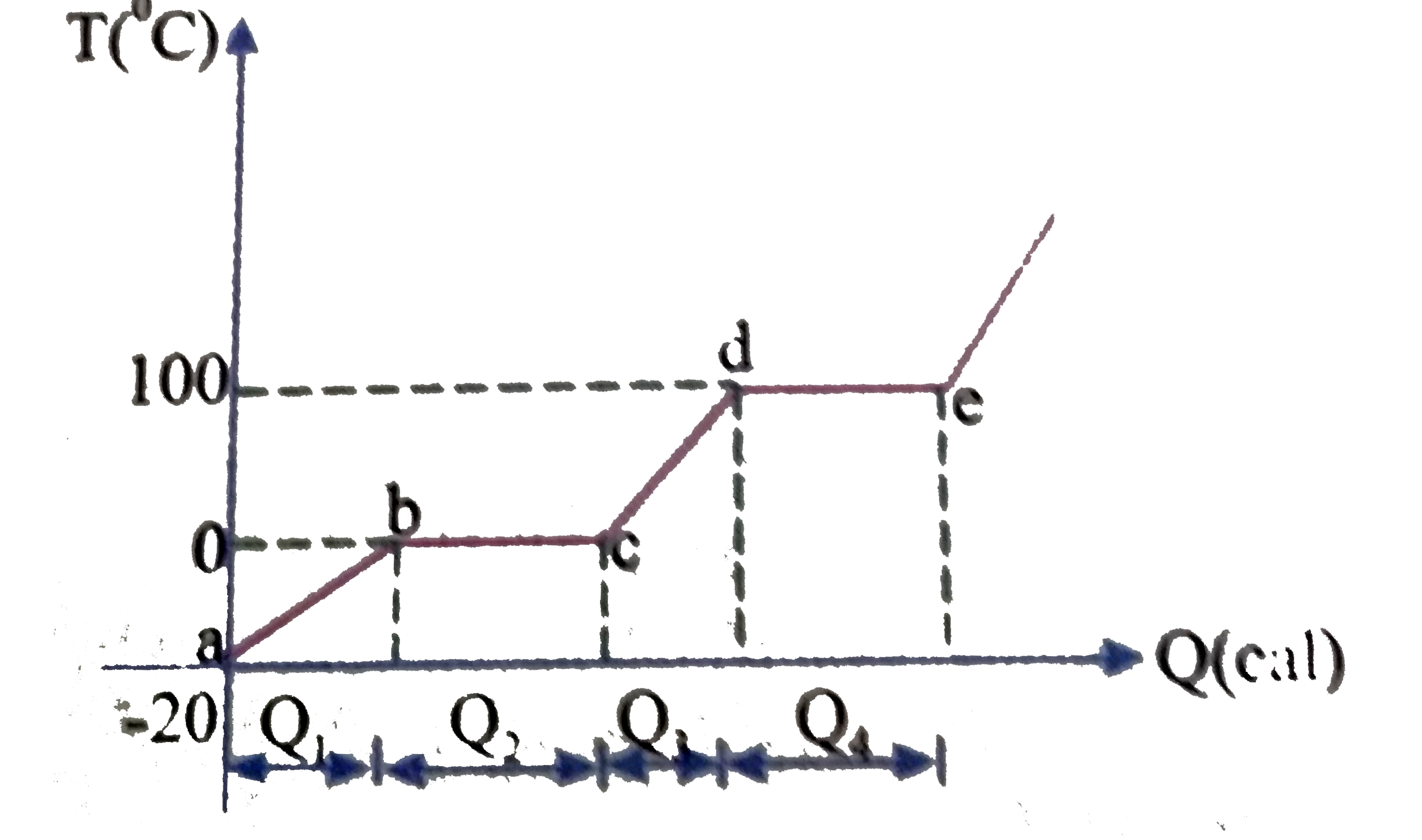Complete Solutions to Solved Example of chapter CALORIMETRY of Class 11 book with complete answers and questions
| Class 11 | PHYSICS |
| Chapter | CALORIMETRY |
| NARAYANA | Solved Example |
| Number Of Questions | 17 |
| Academic Year | 2023-24 |
A lead piece of mass `25 g` gives out `1200` calories of heat when it is cooled from `90^@ C` to `10^@ C`. What is its
(i) specific heat
(ii) thermal capacity
(iii) water equivalent.
View SolutionThe specific heat of a substance varies as `(3 theta^(2) + theta) xx 10^(3) cal g^(-10) C^(-1)`. What is the amount of heat required to rise the temperature of `1 kg` of substance frm `10^@C` to `20^@ C` ?
View SolutionFind the water equivalent of copper block of mass `200 g`. The specific heat of copper is `0.09 cal g^(0) C`.
View SolutionTwo sphere of radii in the ratio `1 : 2`, have specific heats in the ration `2 : 3`. The densities are in the ratio `3 : 4`. Find the ration of their thermal capacities.
View Solution`10` litres of hot water at `70^@C` is mixed with an equal volume of cold water at `20^@ C`. Find the resultant temperature of the water. (Specific heat of water `= 4200 J//kg -K`).
View SolutionA sphere of alumininum of mass 0.047 kg placed for sufficient time in a vessel containing boling water, so that the sphere is at `100^(@)C`. It is then immediately transferred to 0.14 kg copper calorimeter containing 0.25 kg of water at `20^(@) C` . The temperature of water rises and attains a steady state at `23^(@)C` . calculate the specific heat capacity of aluminum. Specific heat capacity of copper = `0.386 xx 10^(3) J kg^(-1) K^(-1)`.
Specific heat capacity of water = `4.18 xx 10^(-3) J kg^(-1) K^(-1)`
View SolutionThe temperature of equal masses of three different liquids A,B and C are `12^@C, 19^@C and 28^@C` respectively. The temperature when A and B are mixed is `16^@C` and when B and C are mixed it is `23^@C`. What should be the temperature when A and C are mixed?
View SolutionThe melting point of ice `0^@C` at `1 atm`. At what pressure will it be `-1^@ C` ?
(Given, `V_(2)-V_(1) =(1-(1)/(0.9)) xx 10^(-3) m^(3)`).
View SolutionA piece of ice of mass `100 g` and at temperature `0^@ C` is put in `200 g` of water of `25^@ C`. How much ice will melt as the temperature of the water reaches `0^@ C` ? (specific heat capacity of water `=4200 J kg^(-1) K^(-1)` and latent heat of fusion of ice `= 3.4 xx 10^(5) J Kg^(-1)`).
View SolutionThe following graph represents change of state of `1` gram of ice at `-20^@C`. Find the net heat required to convert ice into steam at `100^@ C`.
`S_(ice) = 0.53 cal//g -^@ C`
 .
.
View SolutionA calaorimeter of water equivalent `83.72 Kg` contains `0.48 Kg` of water at `35^@ C`. How much mass of ice at `0^@C` should be added to decrease the temperature of the calorimeter to `20^@ C`.
`(S_(w) = 4186 J//Kg -K and L_(ice) = 335000 J//Kg)`.
View SolutionA steam at `100^@C` is passed into `1 kg` of water contained in a calorimeter of water equivalent `0.2 kg` at `9^@C` till the temperature of the calorimeter and water in it is increased to `90^@C`. Find the mass of steam condensed in `kg(S_(w) = 1 cal//g^@C, & L_("steam") = 540 cal//g) (EAM = 14 E)`.
View Solution`1 g` steam at `100^@C` is passed in an insulating vessel having `1 g` ice at `0^@C`. Find the equilibrium composition of the mixture. (Neglecting heat capacity of the vessel).
View Solution`20 g` of steam at `100^@ C` is passes into `100 g` of ice at `0^@C`. Find the resultant temperature if latent heat if steam is `540 cal//g`,latent heat of ice is `80 cal//g` and specific heat of water is `1 cal//g^@C`.
View Solution`6 gm` of steam at `100^@ C` is mixed with `6 gm` of ice at `0^@ C`. Find the mass of steam left uncondensed.
`(L_(f)=80 cal//g,L_(v)= 540cal//g, S_(water) = 1cal//g-^(@) C)`.
View SolutionA piece of ice (heat capacity `=2100 J kg^(-1) .^(@)C^(-1)` and latent heat `=3.36xx10^(5) J kg^(-1)`) of mass m grams is at `-5 .^(@)C` at atmospheric pressure. It is given 420 J of heat so that the ice starts melting. Finally when the ice . Water mixture is in equilibrium, it is found that 1 gm of ice has melted. Assuming there is no other heat exchange in the process, the value of m in gram is
View SolutionWhen a small ice crystal is placed in overcooled water it begins to freeze instantaneously.
i. What amount of ice is formed from 1 kg of water over cooled to `-8^@C` ? L of water `=336xx10^3 J//kg` and s of water`=4200 J//kg//K`.
ii. What should be the temperature of the overcooled water in order that all of it be converted into ice at `0^@C` ?
View Solution
Solved Example questions and complete solutions for chapter CALORIMETRY of NARAYANA PHYSICS (HINGLISH) of Class 11